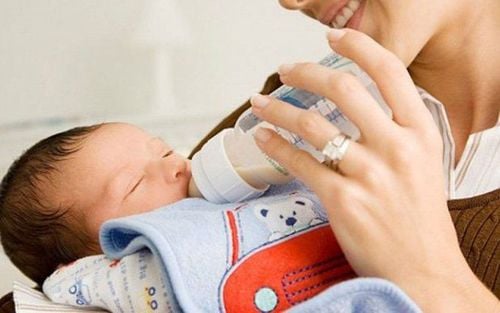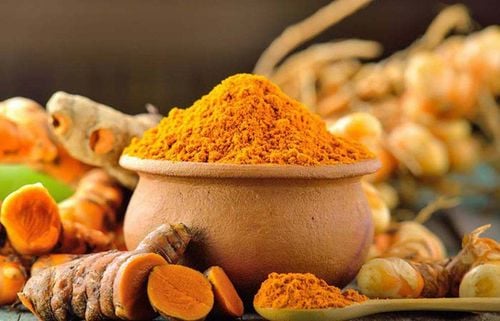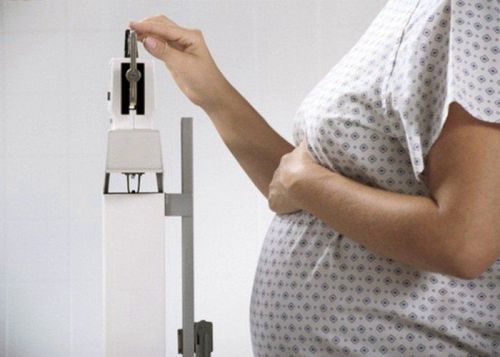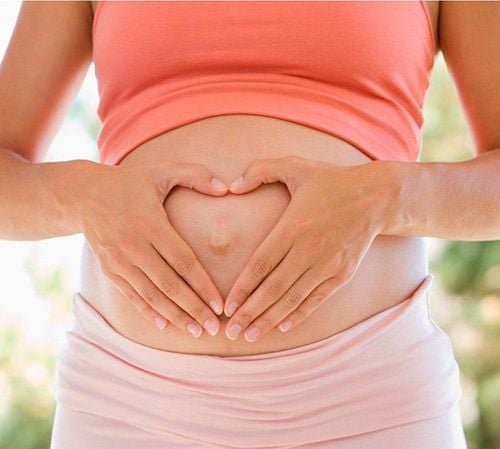This is an automatically translated article.
Getting in shape after giving birth is the desire of many mothers. Here are some postpartum diet tips to help you succeed and feel comfortable throughout your postpartum weight loss journey.1. Don't start dieting too soon
Your body needs time to recover from labor and delivery. Give yourself complete rest until the day of your 6 week postpartum checkup. If your doctor allows, you can start tracking your calorie intake and actively lose weight after giving birth. For women who are breastfeeding, experts recommend waiting until your baby is at least 2 months old before trying to lose weight.Starting a diet too soon after giving birth can slow your recovery and make you feel more tired. Meanwhile, new mothers need a lot of energy to adjust to life with babies. Also, if you're breastfeeding, your postpartum diet can affect your milk supply. Be patient and give your body time to settle down, you will be surprised at how naturally you will lose weight, especially if you are breastfeeding.
2. Have a realistic view of postpartum weight loss
Remember that it is very difficult to return to your exact pre-pregnancy weight or shape. For many women, pregnancy causes permanent changes. Their belly will be softer, the hips a bit wider, and the waistline bigger. Therefore, you should adjust your goals to be as close to reality as possible, avoiding putting pressure on yourself.3. Focus on exercise
There is no magic pill to help you lose weight after giving birth effectively and safely. A healthy diet combined with regular exercise is the best way to lose weight. The important thing to remember when working out is that you should be trying to lose fat instead of muscle. When your body is ready, start by eating less and being more active - for example, taking your baby for a walk around the block.
Một chế độ ăn uống lành mạnh kết hợp với tập thể dục thường xuyên là cách tốt nhất để giảm cân
4. Lose weight slowly
The diet should not be too strict and strict. The average woman needs a minimum of 1,200 calories a day to stay healthy, and a postpartum mother needs between 1,500-2,200 calories a day to ensure that she has enough energy, as well as to avoid mood swings. If you're breastfeeding, you need a minimum of 1,800 calories and an average of 2,000 - 2,700 calories per day to nourish both yourself and your baby.Losing weight too quickly after giving birth can reduce your milk supply, and also release toxins stored in fat into the blood and milk. Toxins can include heavy metals like lead and mercury, dioxins, and solvents...
Losing about 0.7 kg per week is safe and won't affect your milk supply. To achieve this, cut 500 calories from your current menu each day by consuming less food or increasing your activity level.
5. Eat full and on time
When it comes to taking care of a newborn and adjusting to new routines, it can be difficult to eat on time. Many mothers say that eating 5-6 small healthy meals a day instead of 3 main meals will suit their appetite and save time. A small meal can include 1 slice of sandwich, some carrots, fruit and 1 glass of milk.In fact, skipping meals will only make you tired, not help you lose weight, because you will eat more at other meals. Skipping meals can also make you feel tired and irritable.
Even though you don't like to eat breakfast, you still have to remember that breakfast helps you not to feel hungry and tired as it nears noon, and gives you energy to be more active. In addition, many studies show that skipping breakfast can sabotage your postpartum weight loss efforts. According to statistics, 78% of successful weight loss people eat breakfast every day.
You should also eat slowly if possible. When you take the time to pay attention to your meals, you'll be more likely to notice when you're feeling full and less likely to overeat.
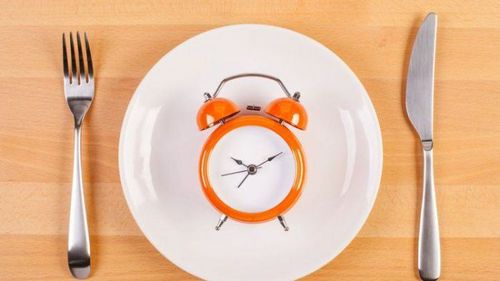
Nhiều nghiên cứu cho thấy bỏ bữa sáng có thể phá hoại nỗ lực giảm cân sau sinh của bạn
6. Picky about food and drink
Research shows that consuming low-fat milk, dairy products, and whole grains can help you lose weight after giving birth. Low-fat, high-fiber foods like fruits (apples, oranges, and berries) and fresh vegetables (carrots, cassava, and bell peppers) are also healthy choices.Here are some suggestions to help you eat more fruits and vegetables:
Make fruit or vegetable smoothies Use fruit or vegetable sauces with fish or chicken Add shredded carrots to sandwiches Try the dishes Grilled vegetables Use cooked vegetable soup. Fat has twice as many calories as carbohydrates or protein, so cutting excess fat from your diet is the easiest way to cut calories. Choose low-fat or fat-free dairy products, bake instead of deep-fried, and limit your intake of sweets, which contain a lot of calories from sugar and fat.
However, fat is still an important nutritional component and should not be completely eliminated from the postpartum diet. In fact, consuming some fat with your meal will help keep you full for longer and keep you from consuming too many carbohydrates. The trick is to choose "good" fats over "bad" fats. The best fats are monounsaturated and polyunsaturated fats, found in canola oil, olive oil, avocados, nuts, and fatty fish (salmon).
The types of fat to avoid are saturated fat and trans fat. They carry a risk of heart disease and diabetes, and pass into breast milk. Saturated fat is found in meat and dairy products. Trans fats are found in many fried foods, fast foods, and baked goods.
Finally, drink about 8 - 9 cups of fluids a day, but avoid juices, sodas, and high-calorie coffee.

Nên uống khoảng 8 - 9 cốc chất lỏng mỗi ngày, nhưng tránh nước trái cây, soda và cà phê chứa nhiều calo
7. Postpartum nutrition for healthy weight loss
The following postpartum diet for weight loss adds up to 2,200 calories per day for breastfeeding mothers, and an additional 1,800 calories per day for non-breastfeeding women. However, each person's individual calorie needs will vary depending on weight, metabolism and activity level, as well as breastfeeding level.You can refer to the following plan:
| Loại thực phẩm | Khẩu phần nếu có cho con bú | Khẩu phần nếu không cho con bú | Khẩu phần cụ thể |
|
Các loại ngũ cốc Đảm bảo tối thiểu một nửa khẩu phần là dùng ngũ cốc nguyên hạt (gạo lứt, hạt quinoa,...) |
Khoảng 200g | 170g | Tương đương 6 - 7 lát bánh mì; 6 - 7 chén ngũ cốc đã nấu chín; 3 - 4 chén cơm hoặc mì; 12 - 14 cái bánh cookie |
|
Rau củ Ăn đa dạng các loại rau củ, bao gồm đậu xanh, củ có tinh bột và ít nhất một loại giàu vitamin A (khoai lang, cà rốt, rau bina hoặc cải xoăn) |
3 chén | 2,5 chén | 1 chén rau sống / chín hoặc nước ép; 2 chén rau diếp hoặc rau lá xanh sống; 1 củ khoai tây nướng cỡ vừa |
|
Trái cây Bao gồm ít nhất một loại trái cây giàu vitamin C (kiwi, cam, dâu tây hoặc dưa lưới) |
2 chén | 1,5 chén | 1 chén tương đương: 1 quả táo nhỏ; 1 quả chuối, cam hoặc đào lớn; 1 quả lê vừa; 1 ly nước ép; 1/2 chén trái cây sấy khô |
| Sữa | 3 ly | 3 ly | 3 ly sữa tươi, sữa đậu nành hoặc sữa chua, ưu tiên loại ít hoặc không béo; 128g phô mai |
|
Thịt và đậu Đa dạng các nguồn cung cấp đạm protein, bao gồm các loại đậu, hạt và cá |
170g | Khoảng 142g | Cá, gà, nạc bò hoặc heo; trứng; đậu; đậu hũ; 2 muỗng bơ đậu phộng |
|
Dầu Chọn dầu và bơ thực vật có dán nhãn không chứa chất béo chuyển hóa trên bao bì |
6 muỗng | 5 muỗng |
1 muỗng tương đương: 1 muỗng dầu, bơ thực vật hoặc mayonnaise; 1/6 quả bơ; 8 quả ô liu lớn 1 muỗng bơ đậu phộng chứa 2 muỗng dầu; 28g các loại hạt bằng 3 muỗng dầu |
|
Thêm calo Bao gồm các loại sữa béo, phô mai, thịt, đường thêm vào món ăn hoặc tăng thêm khẩu phần |
290 | 195 | Đa dạng |
Gathering a team of leading pediatricians: including leading experts with high professional qualifications (professors, associate professors, doctors, Master's degree), experienced, worked at major hospitals such as Bach Mai, 108.. The doctors are all well-trained, professional, conscientious, knowledgeable about young psychology. In addition to domestic pediatric specialists, the Department of Pediatrics also has the participation of foreign experts (Japan, Singapore, Australia, USA) who are always pioneers in applying the latest and most effective treatment regimens. . Comprehensive services: In the field of Pediatrics, Vinmec provides a series of continuous medical examination and treatment services from Newborn to Pediatric and Vaccine,... according to international standards to help parents take care of their baby's health from birth to childhood. Advanced techniques: Vinmec has successfully deployed many specialized techniques to make the treatment of difficult diseases in pediatrics more effective: neurosurgery - skull, stem cell transplant blood in cancer treatment. Professional care: In addition to understanding children's psychology, Vinmec also pays special attention to the children's play space, helping them to play comfortably and get used to the hospital's environment, cooperate in treatment, improve the efficiency of medical treatment.
Please dial HOTLINE for more information or register for an appointment HERE. Download MyVinmec app to make appointments faster and to manage your bookings easily.
Reference source: babycenter.com



